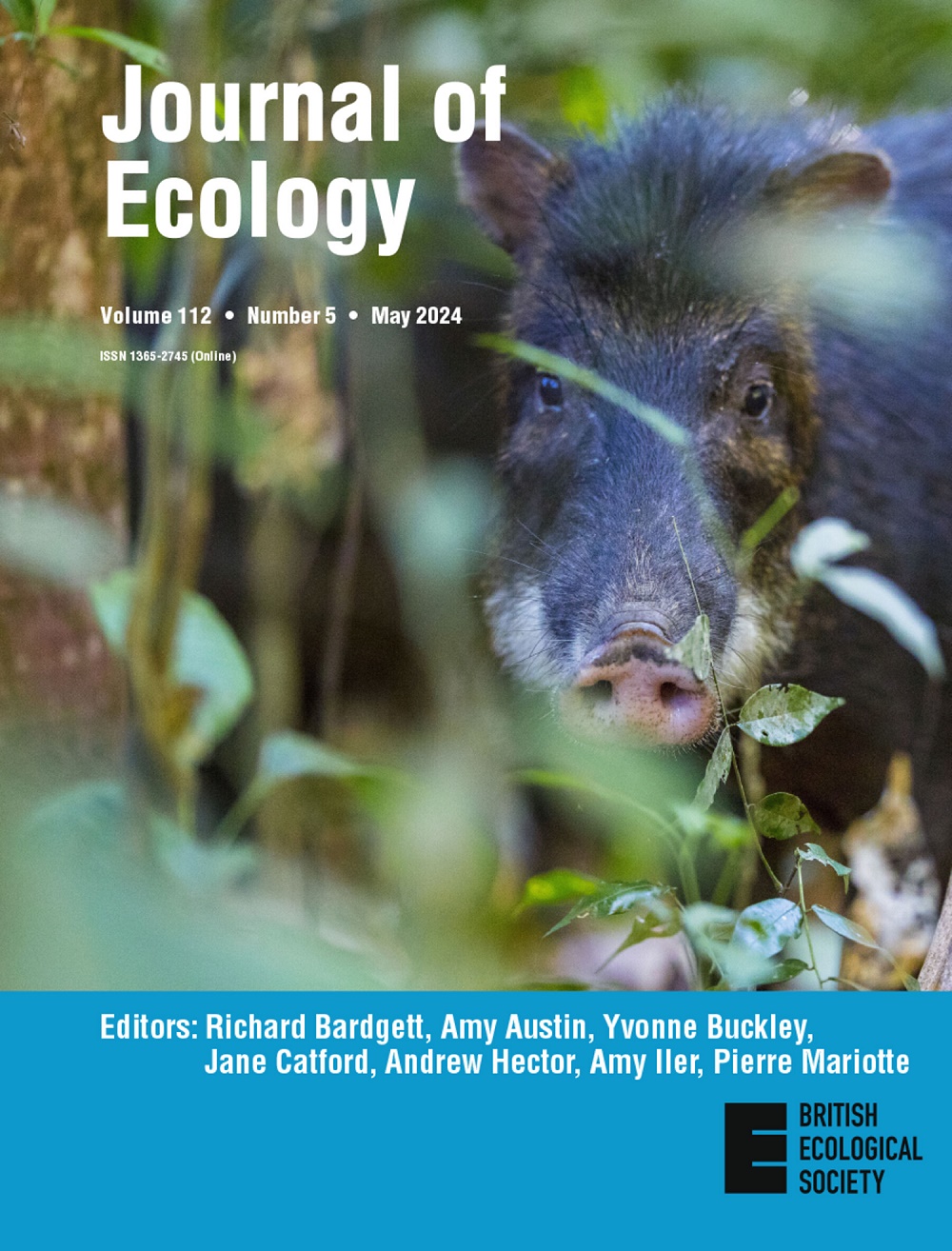Nitrogen enrichment threatens non-N mineral nutrition and nutritional stability of forage due to biodiversity loss
IF 5.6
1区 环境科学与生态学
Q1 ECOLOGY
引用次数: 0
Abstract




由于生物多样性的丧失,氮的富集威胁着牧草的非氮素矿质营养和营养稳定性
人类活动引起的氮(N)富集增加了全球草地的饲料产量,但减少了植物多样性。目前尚不清楚富氮导致的生物多样性丧失是否会影响牧草的非氮矿质营养和营养稳定性,这是牧草质量的关键组成部分。研究了2015 - 2023年9年间温带草原牧草非氮营养(P、K、Ca、Mg、Fe、Mn、Cu、Zn)和营养稳定性对不同N添加量(0、2、5、10、20和50 g N m−2年−1年)的响应。氮的添加降低了牧草的标准化矿物浓度(MC)和预期矿物稳定性(MS),且随着时间的推移,影响逐渐增强。植物物种丰富度与牧草MC和MS呈饱和正相关关系。氮素添加通过降低植物物种丰富度而显著降低了草地供应非氮矿物的能力,并导致牧草产量和质量之间的权衡。此外,由于物种丰富度的下降更强烈,干旱年N诱导的MC和MS下降更为严重。合成。氮的富集降低了牧草的非氮矿质营养和营养稳定性,这主要是由于物种丰富度的损失。虽然生物多样性在维持生产中的定量作用已被广泛报道,但我们的研究结果强调了其在氮沉降增加和气候变化情景下的定性作用。牧草产量和质量之间的权衡突出了不仅在不同的生态系统服务之间,而且在特定服务的不同方面之间存在权衡。
本文章由计算机程序翻译,如有差异,请以英文原文为准。
求助全文
约1分钟内获得全文
求助全文
来源期刊

Journal of Ecology
环境科学-生态学
CiteScore
10.90
自引率
5.50%
发文量
207
审稿时长
3.0 months
期刊介绍:
Journal of Ecology publishes original research papers on all aspects of the ecology of plants (including algae), in both aquatic and terrestrial ecosystems. We do not publish papers concerned solely with cultivated plants and agricultural ecosystems. Studies of plant communities, populations or individual species are accepted, as well as studies of the interactions between plants and animals, fungi or bacteria, providing they focus on the ecology of the plants.
We aim to bring important work using any ecological approach (including molecular techniques) to a wide international audience and therefore only publish papers with strong and ecological messages that advance our understanding of ecological principles.
 求助内容:
求助内容: 应助结果提醒方式:
应助结果提醒方式:


